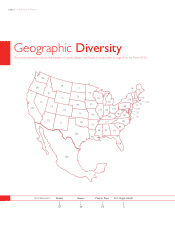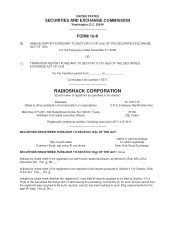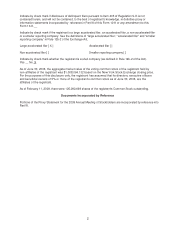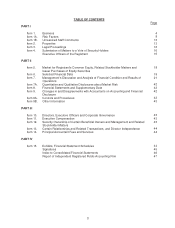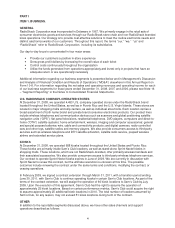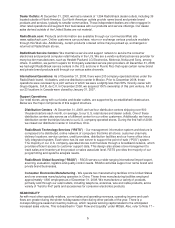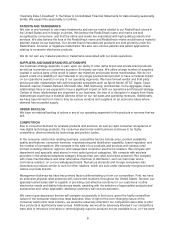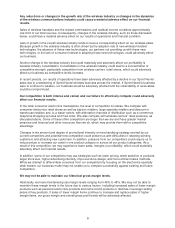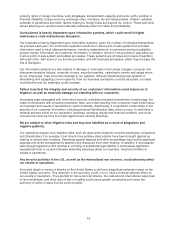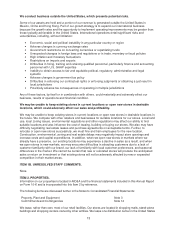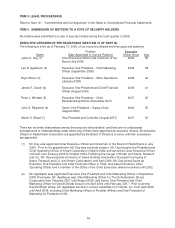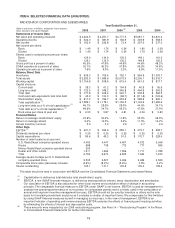Radio Shack 2008 Annual Report Download - page 16
Download and view the complete annual report
Please find page 16 of the 2008 Radio Shack annual report below. You can navigate through the pages in the report by either clicking on the pages listed below, or by using the keyword search tool below to find specific information within the annual report.Any reductions or changes in the growth rate of the wireless industry or changes in the dynamics
of the wireless communications industry could cause a material adverse effect on our financial
results.
Sales of wireless handsets and the related commissions and residual income constitute approximately
one-third of our total revenue. Consequently, changes in the wireless industry, such as those discussed
below, could have a material adverse effect on our results of operations and financial condition.
Lack of growth in the overall wireless industry tends to have a corresponding effect on our wireless sales.
Because growth in the wireless industry is often driven by the adoption rate of new wireless handset
technologies, the absence of these new technologies, our partners not providing us with these new
technologies, or the lack of consumer interest in adopting these new technologies, could adversely affect
our business.
Another change in the wireless industry that could materially and adversely affect our profitability is
wireless industry consolidation. Consolidation in the wireless industry could lead to a concentration of
competitive strength, particularly competition from wireless carriers’ retail stores, which could adversely
affect our business as competitive levels increase.
In recent periods, our results of operations have been adversely affected by a decline in our Sprint Nextel
sales due to a weakening of Sprint Nextel wireless business across the market. If Sprint Nextel’s business
were to continue to weaken, our business would be adversely affected and the collectability of receivables
could be compromised.
Our competition is both intense and varied, and our failure to effectively compete could adversely
affect our financial results.
In the retail consumer electronics marketplace, the level of competition is intense. We compete with
consumer electronics retail stores as well as big-box retailers, large specialty retailers and discount or
warehouse retailers and, to a lesser extent, with alternative channels of distribution such as e-commerce,
telephone shopping services and mail order. We also compete with wireless carriers’ retail presence, as
discussed above. Some of these other competitors are larger than we are and have greater market
presence and financial and other resources than we do, which may provide them with a competitive
advantage.
Changes in the amount and degree of promotional intensity or merchandising strategy exerted by our
current competitors and potential new competition could present us with difficulties in retaining existing
customers and attracting new customers. In addition, pressure from our competitors could require us to
reduce prices or increase our costs in one product category or across all our product categories. As a
result of this competition, we may experience lower sales, margins or profitability, which could materially
adversely affect our financial results.
In addition, some of our competitors may use strategies such as lower pricing, wider selection of products,
larger store size, higher advertising intensity, improved store design, and more efficient sales methods.
While we attempt to differentiate ourselves from our competitors by focusing on the electronics specialty
retail market, our business model may not enable us to compete successfully against existing and future
competitors.
We may not be able to maintain our historical gross margin levels.
Historically, we have maintained gross margin levels ranging from 45% to 48%. We may not be able to
maintain these margin levels in the future due to various factors, including increased sales of lower margin
products such as personal electronics products and name brand products or declines in average selling
prices of key products. If sales of lower margin items continue to increase and replace sales of higher
margin items, our gross margin and overall gross profit levels will be adversely affected.
9


